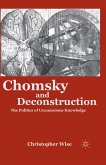This book examines the affinity between GCGBPtheoryGC and GCGBPdeconstructionGC that developed in the American academy in the 1970s by way of the GCGBPYale CriticsGC: Harold Bloom, Paul de Man, Geoffrey Hartman, and J. Hillis Miller, sometimes joined by the French philosopher Jacques Derrida. With this semi-fictional collective, theory became a media event, first in the academy and then in the wider print media, in and through its phantasmatic link with deconstruction and with GYale.G The important role played by aesthetic humanism in American pedagogical discourse provides a context for understanding theory as an aesthetic scandal, and an examination of the ways in which de ManGs work challenges aesthetic pieties helps us understand why, by the 1980s, he above all had come to personify Gtheory.G Combining a broad account of the GYale CriticsG phenomenon with a series of careful reexaminations of the event of theory, Redfield traces the threat posed by languageGs unreliability and inhumanity in chapters on lyric, on HartmanGs representation of the Wordsworthian imagination, on BloomGs early theory of influence in the 1970s together with his later media reinvention as the genius of the Western Canon, and on John GuilloryGs influential attempt to interpret de Manian theory as a symptom of literatureGs increasing marginality. A final chapter examines Mark TanseyGs paintings Derrida Queries de Man and Constructing the Grand Canyon, paintings that offer subtle, complex reflections on the peculiar event of theory-as-deconstruction in America.
Dieser Download kann aus rechtlichen Gründen nur mit Rechnungsadresse in A, B, BG, CY, CZ, D, DK, EW, E, FIN, F, GR, HR, H, IRL, I, LT, L, LR, M, NL, PL, P, R, S, SLO, SK ausgeliefert werden.









